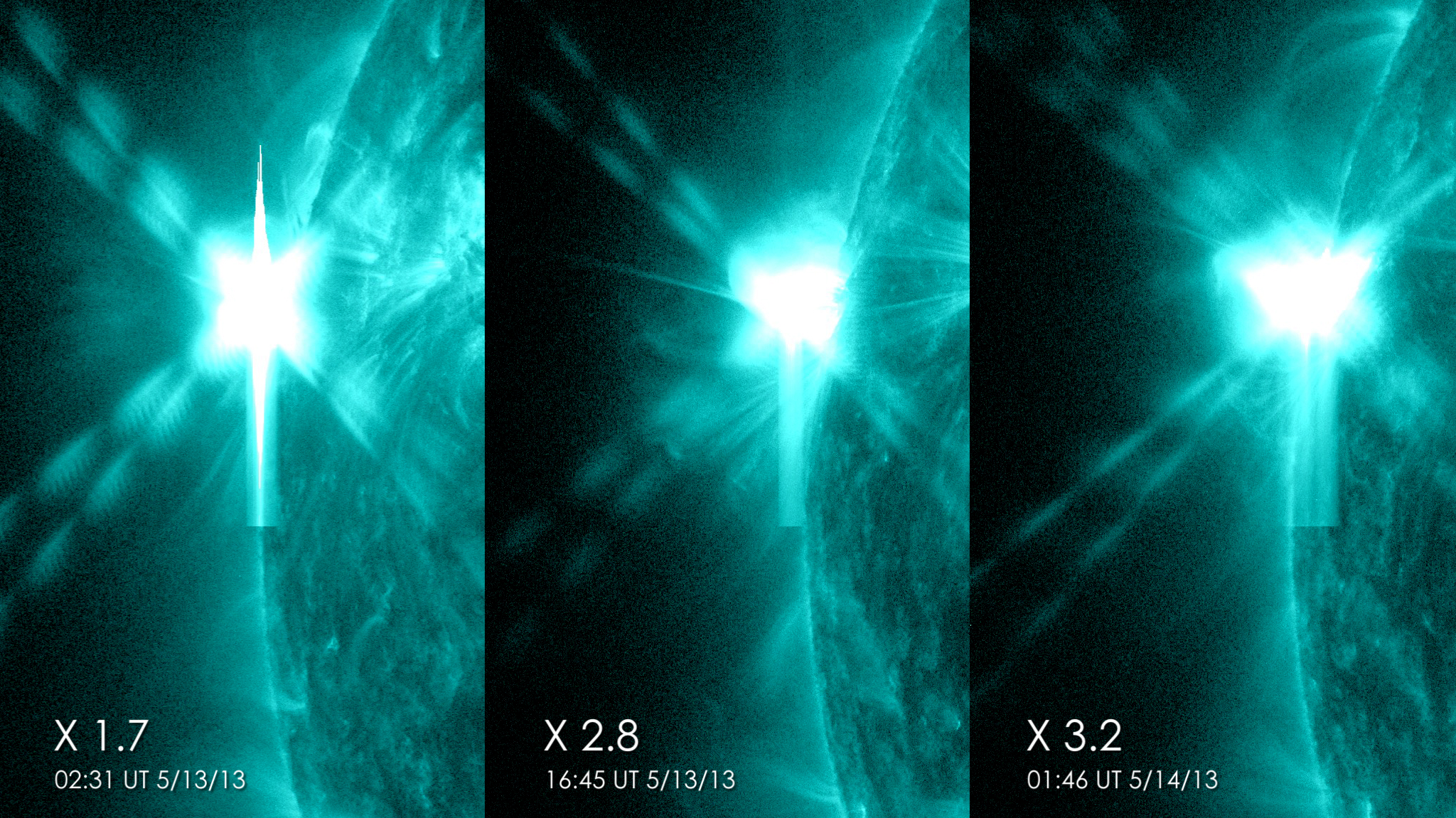'Solar clock' could predict rhythms of dangerous weather in the sun's cycle
Measuring the solar cycle by monitoring the rhythm of the sun's magnetic field could help predict solar flare surges that can damage communication systems on Earth.

For 400 years sunspots have been used to measure the sun's cycle, but a newly suggested 'circle of fifths' system could predict dangerous and violent solar events years in advance.
New research suggests that a 'solar clock' based on the sun's magnetic field could be a more precise way of predicting dangerous solar flares that threaten communications systems on Earth, years in advance.
Suggested by Partnership for Heliophysics and Space Environment Research (PHaSER) scientist, Robert Leamon, the new framework is based on research that indicates notable and sometimes abrupt changes in the solar cycle occur with a rhythm at each one-fifth of a cycle.
Related: Solar cycle: What is it and why does it matter?
Dubbing the frequency a 'circle of fifths,' Leamon and his team think that despite the fact solar cycles can vary by months or even years, they still operate with a clear and predictable sequence of events.
If correct, the solar clock concept could supersede the current method used to measure the solar cycle: Observations of sunspots — dark patches that appear across the sun's surface the photosphere — which has been in place for four centuries.
The sun has an approximate solar cycle of 11 years, with the reduced solar activity (the solar minimum ) used to determine the start of each cycle. Leamon thinks that this method of tracking the sun's cycles is both arbitrary and imprecise.
Breaking space news, the latest updates on rocket launches, skywatching events and more!
His new framework builds upon a study published two years ago that pointed to the existence of a phenomenon in the solar cycle the authors called 'the terminator.'
In each new solar cycle, the sun's magnetic field changes orientation from one pole to the other, but there is an overlap between cycles in which change isn't complete. The terminator describes the point in a cycle at which the orientation of the previous cycle has completely vanished from the surface of the sun.
This point is accompanied by a sudden and rapid rise in solar activity, and Leamon suggests that landmarks in the solar cycle from terminator to terminator are clearer and more consistent than sunspot activity. This potentially makes the use of terminators a better way of measuring the sun's cycle.
The sun's circle of fifths
Leamon and his colleagues used data collected by The Dominion Radio Astrophysical Observatory in Penticton, Canada, and the Wilcox Solar Observatory at Stanford University, to identify patterns in the sun's cycle.
"How many different solar things can we look at? And then we realized they all overlap on this same set of fifths," Leamon said.
They found that changes occurred at exactly one-fifth of a cycle. At two-fifths of a cycle dark regions known as polar corona holes formed at the sun's poles. At the three-fifths mark, the sun blasted out that cycle's last X-class flare , a strong and potentially hazardous type of solar flare.
Related: Satellites can disappear in major solar storms and it could take weeks to find them
Less consistently, at four-fifths of a cycle, sunspots at the sun's photosphere reach a minimum. Then the final event of the cycle the sun passes through another terminator.
"The max number of sunspots doesn't quite align with when the polar field reverses, but the polar field reversal happens at exactly one-fifth of the cycle going from terminator to terminator," Leamon said.
What Leamon and his team say is significant about these 'landmarks' is they are driven by the magnetic field of the sun. They think that solar flares are just a symptom of this.
"Everything is tied to these five landmarks," Leamon added. "It's almost like symptoms and causes."
The framework suggested by Leamon would work by observatories marking a complete solar reversal with the observation used to mark the commencement of a fresh solar cycle. This would have the benefit of allowing researchers to set a precise length of the first fifth of the cycle, and then mark the significant solar events along the way by using simple multiplication.
Not only would this help protect technologies that can be damaged by solar events, such as satellites and telecommunications infrastructure, but it could also put tighter constraints on when severe flares are expected.
The framework suggested by Leamon and his colleagues suggests the sun's current cycle began in December 2021 after the last terminator and ends in mid-2027.
Leamon's research is featured in a paper published in the journal Frontiers in Astronomy and Space Sciences.
Follow us on Twitter @Spacedotcom or on Facebook.

Robert Lea is a science journalist in the U.K. whose articles have been published in Physics World, New Scientist, Astronomy Magazine, All About Space, Newsweek and ZME Science. He also writes about science communication for Elsevier and the European Journal of Physics. Rob holds a bachelor of science degree in physics and astronomy from the U.K.’s Open University. Follow him on Twitter @sciencef1rst.

